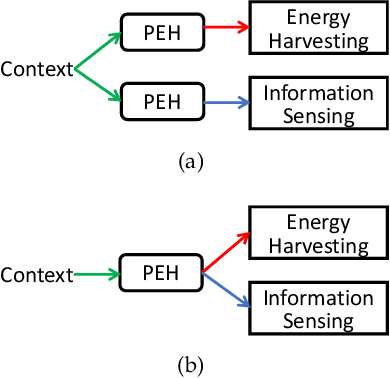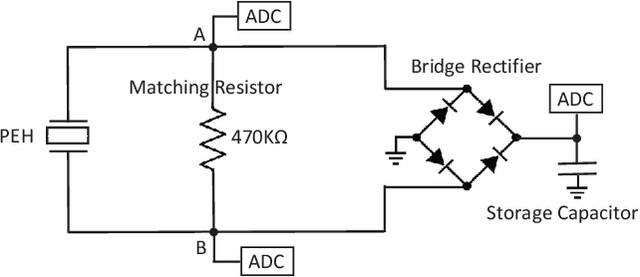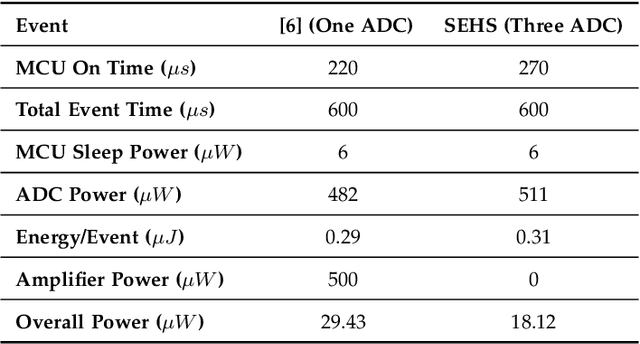Simultaneous Energy Harvesting and Gait Recognition using Piezoelectric Energy Harvester
Paper and Code
Sep 06, 2020



Piezoelectric energy harvester, which generates electricity from stress or vibrations, is gaining increasing attention as a viable solution to extend battery life in wearables. Recent research further reveals that, besides generating energy, PEH can also serve as a passive sensor to detect human gait power-efficiently because its stress or vibration patterns are significantly influenced by the gait. However, as PEHs are not designed for precise measurement of motion, achievable gait recognition accuracy remains low with conventional classification algorithms. The accuracy deteriorates further when the generated electricity is stored simultaneously. To classify gait reliably while simultaneously storing generated energy, we make two distinct contributions. First, we propose a preprocessing algorithm to filter out the effect of energy storage on PEH electricity signal. Second, we propose a long short-term memory (LSTM) network-based classifier to accurately capture temporal information in gait-induced electricity generation. We prototype the proposed gait recognition architecture in the form factor of an insole and evaluate its gait recognition as well as energy harvesting performance with 20 subjects. Our results show that the proposed architecture detects human gait with 12% higher recall and harvests up to 127% more energy while consuming 38% less power compared to the state-of-the-art.
 Add to Chrome
Add to Chrome Add to Firefox
Add to Firefox Add to Edge
Add to Edge